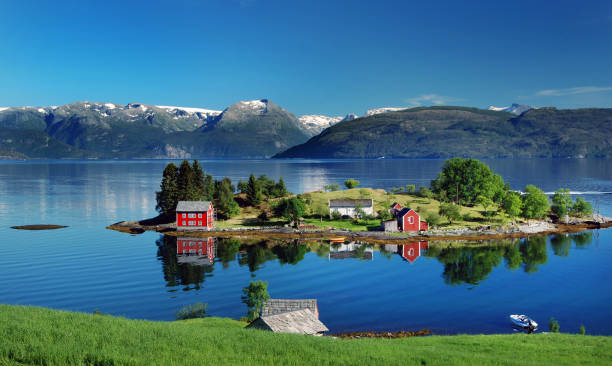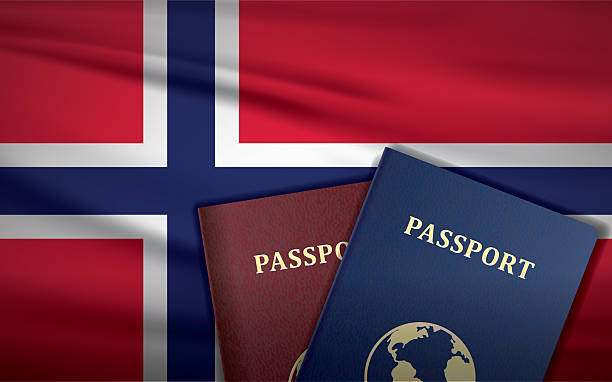The Question Everyone Asks
If I had a krone for every time someone asked me, “Is it easy to immigrate to Norway?”, I’d probably have a cabin by the fjord by now.
It’s a fair question. Norway looks like a dream from the outside—high salaries, safe streets, free healthcare, and those jaw-dropping landscapes. But immigration? It’s not exactly like booking a flight and showing up.
I’ll give you the honest version: it can be smooth if you know what you’re doing, and a nightmare if you don’t. Over the years, I’ve helped students, families, and professionals make the move, and I’ve seen both sides—the tears of frustration and the joy when the approval email finally lands.
This guide is my attempt to lay it all out: the process, the pitfalls, the stories, and yes, the shortcuts that make it less painful.
Why People Are Drawn to Norway
Before we dig into permits and paperwork, let’s zoom out for a second. Why Norway?
- Stability. The country has one of the strongest economies in Europe.
- Work-life balance. Norwegians value free time and family—overtime is rare.
- Education. University is free for locals, and international students benefit too.
- Nature. Where else can you leave your office at 4 PM and be on a mountain trail by 5?
- Safety. Crime rates are low, and social trust is high.
But—and here’s the part people forget—those perks are exactly why Norway doesn’t make it too “easy” to move in. The government carefully regulates immigration to protect what makes the system work.
So… Is It Easy to Immigrate to Norway?
The short answer: not exactly easy, but very doable if you qualify.
It depends on:
- Where you’re from (EU/EEA citizens have fewer hurdles than non-EEA).
- Which visa route you’re applying for (work, family, study, business).
- How complete and accurate your paperwork is.
- Whether you’re navigating it alone or with support (shameless plug: Pytheas can help).
The Main Routes to Norway
Here are the most common immigration pathways, explained like I would to a friend over coffee.
1. Skilled Worker Visa
This is the golden ticket for many. If you’ve got an in-demand skill and a job offer, you’re already halfway there.
I worked with Maria, a Portuguese software engineer, who had an Oslo company wanting her on their team. She needed to prove her degree, submit her contract, and show that her salary met the official threshold. She described it as “a lot of scanning, translating, and double-checking,” but within three months, she was in Norway.
👉 More info: Skilled Worker Visa Norway.
2. Family Immigration
This one is emotional. I helped Ahmed, who studied in Bergen, bring his wife Sara from Egypt. They had to prove their marriage with certified documents, and Ahmed had to show he earned enough to support her.
Sara told me: “I thought it was going to be impossible, but once we had the checklist, it felt less scary.”
The wait was about 12 weeks. Painful, but when they got the approval, they cried.
👉 More info: Family Immigration Services.
3. Student Residence Permit
Norway’s universities are a magnet. Students apply with their admission letter and proof they can cover living expenses. Processing is usually faster (around 6–8 weeks).
Tip from a former student client: open a Norwegian bank account early, it saves headaches later.
4. Business & Entrepreneur Permits
This is the tough one. You’ll need a business plan, capital, and proof your business benefits Norway. Not impossible, but definitely not “easy.”
5. Asylum / Protection
A unique route with its own rules. This isn’t about choice—it’s about necessity. Each case is judged individually.
Step-by-Step: The Immigration Journey
Think of this as your roadmap.
- Pick your route (work, family, student, etc.).
- Gather documents (passport, contracts, diplomas, bank statements).
- Submit to UDI (the Directorate of Immigration).
- Wait—sometimes weeks, sometimes months.
- Register locally after approval (police, tax office, ID number).
- Find housing—which is often harder than the visa itself. That’s why we offer Home Search Services.
- Settle in—language courses, schools for kids, community integration. (See our Settling-in Services).
Pros and Cons of Moving to Norway
Here’s the unfiltered version:
Pros
- Salaries are high.
- Public services are world-class.
- Nature and safety are unmatched.
- The culture values fairness and equality.
Cons
- Housing is expensive.
- Winters are long and dark (hello, vitamin D supplements).
- The paperwork can test your patience.
- Norwegian isn’t the easiest language to master.
Common Questions People Ask
Is it hard to get a visa?
Hard? Not exactly. Detailed? Definitely. Most rejections happen because documents were missing or income didn’t meet the requirement.
How long does it take?
Work visas: 2–3 months. Family: 3–4 months. Students: usually under 2 months.
Do I need Norwegian language skills?
Not to enter. But for daily life, work, and making friends—yes. Even a little goes a long way.
Can I move without a job?
Yes, if you’re a student or joining family. For work migration, a job offer is non-negotiable.
What’s the easiest way?
If you’re skilled and in-demand, the Skilled Worker Visa is the most straightforward.
Quick Comparison Table
| Route | Who It Fits Best | Processing Time | Difficulty |
|---|---|---|---|
| Skilled Worker | Professionals w/ job | 6–12 weeks | Medium |
| Family Immigration | Spouse/children joining | 10–16 weeks | Medium |
| Student Permit | University students | 6–8 weeks | Easy-Med |
| Entrepreneur | Investors/Business | 3–6 months | Hard |
My Honest Advice
So, back to the big question: is it easy to immigrate to Norway?
No, it’s not “easy.” It’s paperwork-heavy, sometimes slow, and can be stressful. But it’s not impossible either. With preparation, patience, and the right help, it’s entirely doable. And once you’re here, the reward—safety, stability, and fjords that make your jaw drop—makes it worth the effort.
Final Thoughts
If you’re serious about moving, don’t just wing it. Get your documents right, choose the right visa path, and if you can, let professionals guide you. That’s where we come in. At Pytheas, we’ve helped countless people go from “just dreaming about Norway” to “actually living here.”








